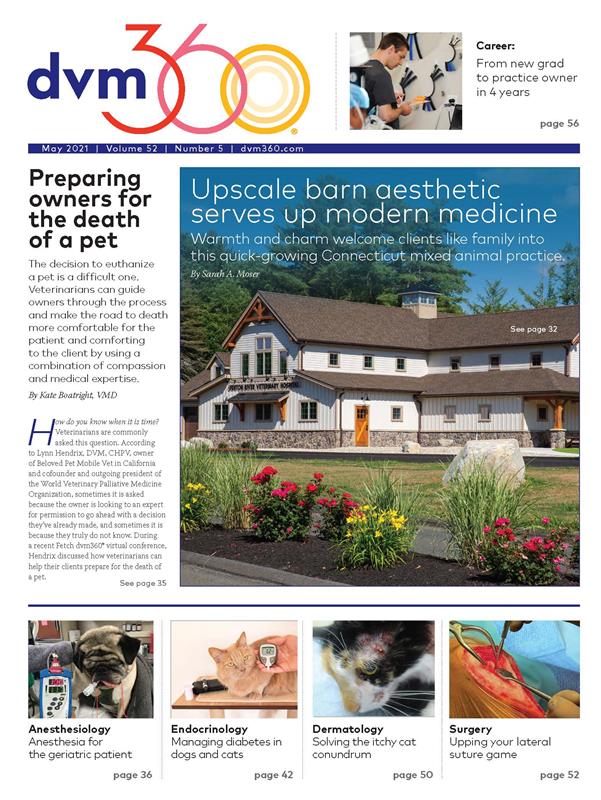For many veterinary practices, social media is just another box to check. Many teams lack the guidance, structure, and best practices required to market their hospital successfully. The main goal of this article is to help eliminate some of the guesswork by providing you with clear guidelines, benchmarks, and an action plan. But first, let’s talk about “second-degree network.”
Understanding the “second-degree network”
Many of your clients likely follow you on social media—and you should always strive to encourage them to do so. Build these relationships by posting regularly and engaging, sharing laughs, and educating them on how to best care for their pets. While engaging with your immediate network of followers is crucial, an often overlooked source of value is the “second-degree network.” Here’s how it works.
Your clients have particular traits that make them well suited for your practice. In general, people are drawn to like-minded individuals. That means the friends of your clients are likely to be a rich source of potential well-fitting clients. The real marketing goal for veterinary practices should be to attract the right kind of clients. Attracting more “A-listers” reduces financial and emotional stress, and helps your team and your practice thrive.
That’s why it’s so important to generate consistent engagement on your social handles. When your clients engage with your posts, your content will begin to show up in their friends’ feeds (your “second-degree network”). By incorporating this strategy, practices can attract substantial amounts of new clients, who, most importantly, are the right kind of clients.
Organizing your social media calendar
Successful social media marketing requires planning, refinement, and diligence. Start by picking themes for each month of the calendar year. Be strategic as these posts are great opportunities to raise awareness about important clinical and nonclinical topics.
Monthly social media themes
Here are a few themes you can incorporate into your monthly social media calendar:
- Oral health
- Puppy/kitten care
- Preventive medicine
- Behavioral problems and tips
- Pet insurance
- Caring for senior pets
- Toxic household items and plants
- Nutrition
Once you have identified the theme for each month, start planning your posts ahead of time. Pick 2 days out of the week to post about this theme, and stick to those days so your followers eventually expect these posts to come (such as Monday and Friday). You’ll want to create about 8 posts each month on the selected theme. One great strategy is writing a blog post on the topic then highlighting key points in social media posts throughout the month. Make sure to also use branded imagery (You can easily do this through Canva to make people stop and take notice.) Make at least 1 or 2 of these posts in video format, as these tend to drive the most engagement.
Pro tip: Use a social management tool like Hootsuite to plan your posts ahead of time and automatically distribute them across your social media platforms.
By filling out your calendar for the year, you’ll begin to teach your community about the most important animal health topics. This will solidify your brand as the trusted expert on anything pet-related and will help pet owners better understand the value of your services.
Your “buckets”
Another key component to increasing your following and engagement is understanding and implementing the “bucket” concept. “Buckets” are the main categories of content that you should be generating. When you clearly understand what to look for, how to look for it, and the mechanics of putting it together, it becomes much easier to grow an effective social media presence.
Stories
We are all naturally captivated by personal stories. Incredible stories play out in your practice all the time—ones of you saving an animal or otherwise making a difference in someone’s life. Start documenting these stories—then write a paragraph or 2 about them. Additionally, include a picture to capture the most emotionally compelling aspect of the story (it could be a dog or cat after they have successfully reunited with their family). Then ask for permission to share the post on your social media pages. Your clients (and their second-degree network) are especially attracted to stories that showcase the power of the human-animal bond. Best practice is to post compelling stories on your social media once to twice a week.
Behind the scenes
Once a week, post behind-the-scenes content on social media, allowing your audience to witness a part of your practice that they don’t usually get to see. It could be training staff on a new procedure or technique, a birthday celebration, a sneak peek at all the TLC the dogs and cats receive during a curbside visit or any number of events that occur that pet owners aren’t privy to. Your clients want to feel connected to you (that’s why they follow you on social media), and offering them intimate and surprising ways to do that will help grow your bond and, subsequently, your business.
In the community
It’s crucial to show the connections between your practice and the community. There are several great ways to approach this. One would be to highlight another local business your team members love. This is a great strategy because it shows the “human” element of your business. Oftentimes these businesses will return the favor by highlighting your practice. You can also promote events or work that you are doing with local groups, rescues, or other initiatives and organizations in the community.
Once a week, post about another business or share what your practice is doing to uplift and unify the community, revealing to your followers a deeper purpose behind the work that you do. Incorporating this strategy will not only help build trust and loyalty among your clients, but will help your practice go from surviving to thriving.
Robert Sanchez is the founder and CEO of Digital Empathy, an award-winning web design and marketing firm for veterinary practices. He frequently lectures at national conferences, leads a team of wonderful employees, sits on the board of VetPartners, and shares his home with two very spoiled dogs—Cole and Lula.

